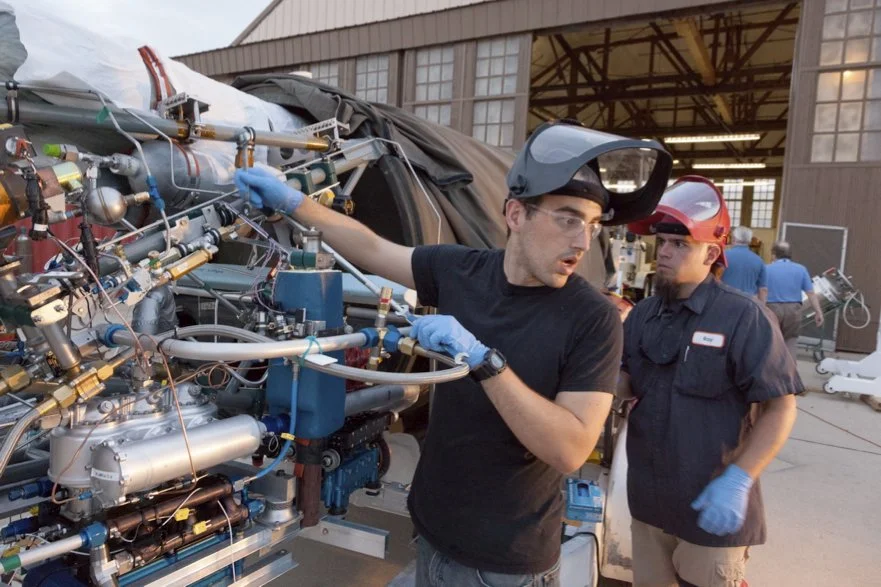Build a little, test a little
XCOR’s Derek Nye and Ray Fitting prepare the Lynx truss for a test day.
XCOR follows a rapid design-build-test approach to developing new products and systems critical to the success of all XCOR programs. We excel at the fast hardware design, build and test of non-toxic liquid propulsion systems. This includes our Lynx main engines, as discussed last week. While non-toxic systems are critical to the overall safety of the Lynx system, they are also vital to the low cost of operation and ownership of Lynx.
“Build a little, test a little”
This “build a little, test a little” approach allows for many Lynx concepts to be evaluated, physically validated and changed rapidly using inexpensive and practical analysis and test methods, rather than relying solely on costly and time-consuming modeling and simulation. It also allows for other projects to generate serious results.
For example, other programs have received multimillion dollar contracts to study pumps without building any hardware. Eventually, a pump may be produced for many more millions of dollars. On the other hand, over a period of 2 years and at dramatically less cost, XCOR has worked with ULA to produce a working liquid hydrogen pump that demonstrates convincingly that it will work for a similar-sized engine with much higher reliability and reusability, and again, at far lower cost. Such outcomes are possible due to frequent and routine testing followed by fast iterations. This produces truly innovative results, and a serious increase in safety and reliability.
When fast iteration is pursued, XCOR focuses on critical operational parameters and requirements for propulsion such as low production costs, ease of maintenance, long life, full reusability and long term producibility. For long-term producibility, we are designing to anticipate the related techniques, materials and processes that may be readily available 20 to 30 years from today.
There are further critical elements, and by focusing on these parameters we drive down total cost of ownership of our systems through upfront procurement cost, maintenance man hours per flight, vehicle turnaround time, life of the product, cost of replacement parts, and reduced support crew and equipment. This positive feedback loop is a benefit to our customers, but also enables enhanced safety. The lower cost of the system to operate, the more that system may be flown. The more it is flown, the more we learn. And the more we learn, the safer we can be.
Design-build-test and XCOR culture
Mobile test stands also feed into our approach. With only minimal fixed test infrastructure at remote locations, we eliminate the need for separate crews reporting to different parts of a larger organization. This fosters a unified design-build-test culture in our company. All equipment and personnel return to the hangar at the end of each test day. Propulsion systems under test are worked on in the comfort of the hangar with all tools and personnel available, then taken to the nearby test site. All engineers and technicians work together toward the common goal of a working product.
Nothing is duplicated, we are one team, costs are contained and safety improves yet again.
Tomorrow: The importance of an actual Lynx cockpit engineering model.
